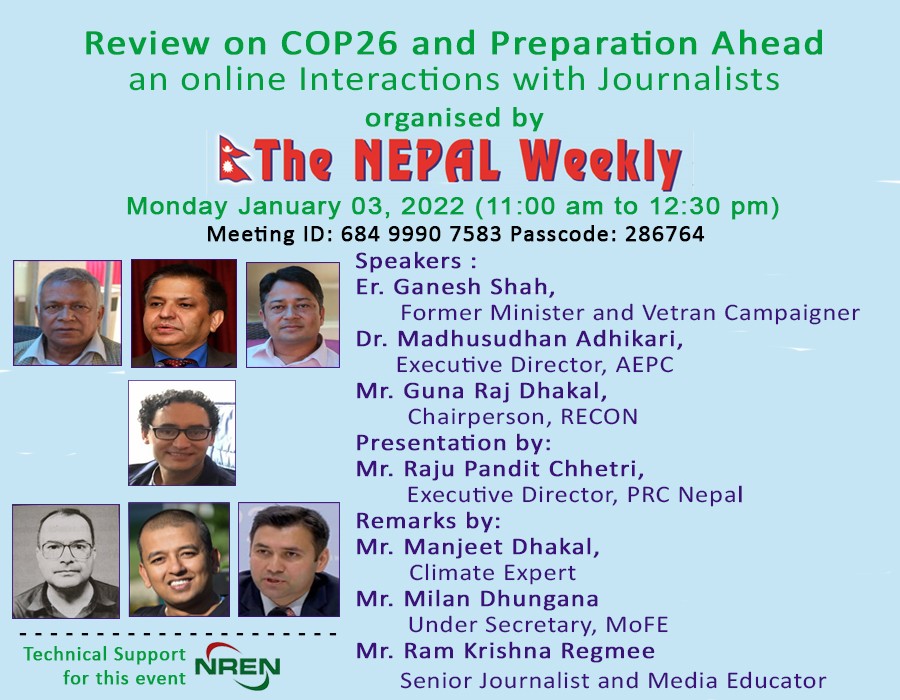 The Nepal Weekly
The Nepal Weekly  March 15, 2022
March 15, 2022
Experts mention that Kathmandu Valley was depended on traditional water structures like stone spouts (Hiti means water taps Pukhu means ponds in local language) and wells for their water supply until the middle of the nineteenth century when water supply through pipes started. The valley has over 200 ponds, 400 Hitis and countless dug-wells. The water supply systems date back to the Lichhavi Period, 1,500 years ago. The Hitis are fed by man-made channels called Rajkulo. These Rajkulos start from the foothills and feed the stone spouts of urban areas in the valley. Few Hitis are also fed by local aquifers. A filter system, which mainly consists of bricks, tiles and sand, is placed behind the Hitis.
The Pukhus, located in residential neighbourhoods, acted as storage tanks as well as recharge systems in the valley. The courtyards in many royal buildings were made of porous material to recharge the neighbourhood aquifers.
The indigenous tribes of the valley, the Newars, have a unique method of maintaining their water supply systems. They celebrate Sithi Nakha and Bugdyo jatara (Machendra Nath Jatra) as festivals which aim at cleaning and maintaining the water supply systems. The cleaning of the systems is carried out in a systematised manner. The community have a traditional method of checking the oxygen level in the wells before entering into these structures. Newars also worship wells, ponds and the water spouts.
World Monuments Fund (WMF) announced that Hitis of the Kathmandu Valley has been named to the 2022 World Monuments Watch, a selection of 25 heritage sites (chosen among 227 nominations from around the world) of worldwide significance whose preservation is urgent and vital to the communities surrounding them. These sites powerfully demonstrate pressing global challenges of climate change, imbalanced tourism, underrepresentation, and recovery from crisis, underscoring the need for greater action to support heritage places and the people who care for them.
World Monuments Fund (WMF) is the leading independent organization devoted to safeguarding the world’s most treasured places to enrich people’s lives and build mutual understanding across cultures and communities. The organization is headquartered in New York City with offices and affiliates in Cambodia, India, Peru, Portugal, Spain and the United Kingdom.
The NGO was launched in 1996 with founding sponsor American Express, the Watch is announced every two years and includes heritage places nominated by individuals and community-based organizations across the globe. The program has been a proven tool for raising awareness of sites in need of protection and galvanizing action and support for their preservation.
Moreover, Chiva, Chaitya Organization (CCO) has been working for promotion and restoration of Chivas in and around Kathmandu valley. The CCO believes that inclusion of heritage of Nepal, Hitis of Kathmandu Valley, by the world-renowned organization like the WMF in their Watch2022 list will encourage us to continue to work in the preservation and promotion of the heritage of the valley.
President of the CCO Mr Prabodh B S Kasaa stated “We feel that inclusion of Hitis of Kathmandu Valley in the Watch 2022 of the WMF has given due respect to the importance of Nepalese heritage on a world stage. We believe that the necessary recognition of the Hitis by the WMF is because of the contribution of individuals and organizations working in preservation and promotion of the Hitis.
“Saving irreplaceable cultural heritage has never been more important,” said Bénédicte de Montlaur, President and CEO of WMF. “The daunting global challenges facing heritage in the twenty-first century require innovative, sustainable, and replicable solutions. By supporting communities in preserving the places they treasure most, we can strengthen social bonds and foster a greater understanding that our futures as global citizens are inextricably linked.”
Representing 24 countries and nearly 12,000 years of history, the 2022 Watch encompasses a broad range of examples of how global challenges manifest and intersect at heritage sites, providing opportunities to improve the lives of communities as they adapt for the future.

